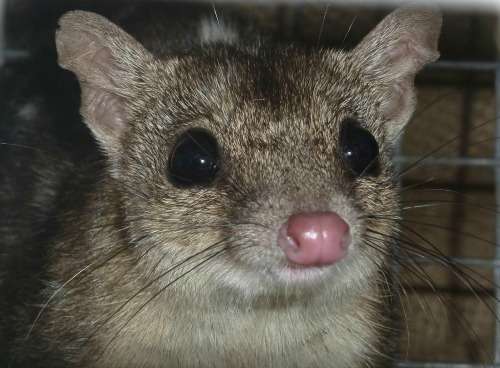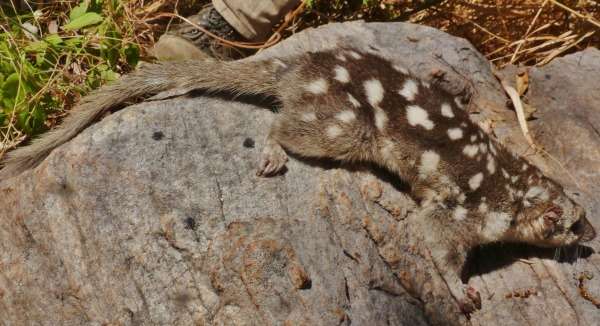Northern quoll population pops up in arid zone
![“The northern quoll [pictured] population at Karlamilyi is significant as the species persists there despite declines observed in other arid areas of its range,” he says. Credit: Jo Riley Northern quoll population pops up in arid zone](https://scx1.b-cdn.net/csz/news/800a/2015/northernquol.jpg)
Scientists working in WA's biggest and most remote national park—Karlamilyi—have discovered a population of northern quolls (Dasyurus hallucatus).
The discovery at the edge of the Little Sandy Desert extends the known range of the quolls a further 200km east of the next nearest known population at Nullagine in the Pilbara.
While northern quolls had never previously been recorded in the park (previously called Rudall River), the scientists attempted to locate the species in an area they deemed suitable quoll habitat—amid gorges with permanent water.
The surveys revealed five northern quoll scat specimens, which DNA analysis later confirmed. And one northern quoll was recorded on a remote motion-sensitive camera.
Consultant biologist Jeff Turpin says the discovery of the quolls within the park is good news for a species in decline.
"This is a highly significant and potentially isolated population of an endangered species at the arid extreme of its range," he says.
"The endangered northern quoll has catastrophically declined across northern Australia as the poisonous cane toad marches along and wildfires burn out of control.
"A new population within the confines of a national park is important for the species' protection."
Northern quolls once occurred almost continuously from the Kimberley to near Brisbane in Queensland, with an isolated population in the Pilbara.

However, alarming population declines had been recorded, particularly in the Northern Territory and Queensland and in the past 10 years the species has almost disappeared from Kakadu National Park.
In WA, the northern quoll remains widespread within 200km of the coast and in cane-toad-free areas of the north-west Kimberley and Pilbara, but has declined in arid areas.

More information: "A new population of the northern quoll (Dasyurus hallucatus) on the edge of the Little Sandy Desert, Western Australia." Australian Mammalogy 37(1) 86-91
Provided by Science Network WA



















